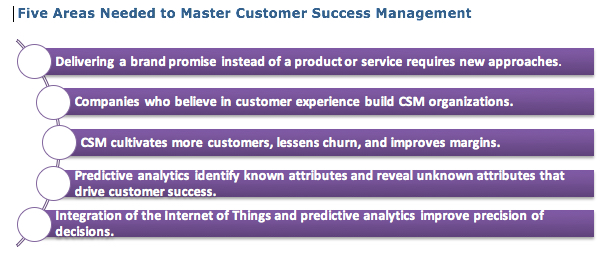In the next part of my series, I’d like to feature Bluenose. Bluenose Analytics offers a customer success platform that allows SaaS businesses to manage customers with complete visibility, a robust early warning system, and built-in playbooks.
Bluenose’s co-founders were both born in Halifax, Canada. They named the company for something they had in common. The Bluenose is a well-known racing sailboat from Halifax, a schooner with three masts that competed around 1900. The Bluenose was virtually undefeated in competition.
Before the opt-in economy, many businesses focused on the initial sale. Organizations spent a significant amount of money on advertising and marketing to potential prospects. The goal – enticing them to convert from a lead to a sale. Despite decades of research showing that after-sales service directly affects the financial stability of a company, organizations paid little attention the after-sale experience and financial longevity of the client. Consequently, organizations never should have spent millions, or in some cases, billions of dollars in advertising, marketing and sales to then drive the customer to a competitor when the after-sales service experience was horrible. Yet, poor after-sales service occurs every single day in many, many companies.
Customer Success Management (CSM) is based on the ability to deliver a consistent customer experience process – before, during, and in particular, after the sale – which results in maximized customer lifetime value and enhanced revenue that leads to increased margins and profits. A shift to CSM happened because we live in a continuous, opt-in economy, where the value of customers is determined by how long they stay customers and if they continue to increase their purchase amounts over time. Because of our opt-in economy, companies must prepare themselves to deliver great, continuous and consistent customer experiences.
This seismic shift to a post-sale, on demand, attention economy transforms the value exchange among customers, partners, suppliers, and brands. And as organizations move to digital business models, CSM plays a critical role in enabling brands and organizations to keep and deliver their brand promise as well as enhance their bottom line.
When choosing the best option for CSM software for your organization, the choice will depend on the business goals of CSM initiatives, the degree to which CSM has been integrated into your culture and how well employees have adopted this mindset. It may be that some organizations will be further along the adoption cycle, while others will need internal champions to encourage and enforce the use of customer success software, processes and best practices.
Data to Decisions Drives the Democratization of Insight
The CSM field has been spurred on by the need to provide after-sales service intelligence that can be turned into actionable insights and decisions. Holistic, data-driven decisions require a multi-disciplinary approach that incorporates performance monitoring with traditional business intelligence technologies.
A multitude of data sources can be transformed into information streams guided by business process. As context is applied to information streams, patterns emerge that provide nuggets of insight. That insight then drives the ability to take action and make better decisions. This shift to using insight not only can serve high-margin, “luxury” brands, but also should be considered for all businesses through an investment in CSM. By transforming business models to include processes that immediately turn data into decisions, brands and organizations gain the ability to provide great, loyalty inspiring experiences that reduce churn and increase revenue.
Customer Success Management Field Sees Tremendous Growth
Through conversations with clients, prospective buyers, system integrators, partners, and vendors, Constellation sees five big themes in customer success management (see Figure 1)[1]:
- Delivering a brand promise instead of a product or service requires new approaches. The onus of delivering on the brand promise – providing great experiences with a company no matter when the customer interacts with it – is putting new pressures on brands and software vendors. This means the business model of both must shift. A company’s business model must move post-sales care to a more mature level. This evolution requires a different mindset and approach to customer lifetime value.
Figure 1. Five Areas Needed to Master Customer Success Management
- Companies who believe in customer experience build CSM organizations. Not all CSM organizations are created equally. In an opt-in economy, the economic value of a customer is realized over time, instead of in the upfront sale. This means that organizations that want to become CSM-oriented are looking at three main areas:
- Hiring, training and rewards for employees
- Becoming a center of excellence for CSM
- Strategy combined with data
- CSM cultivates more customers, lowers churn, and improves margins. The reason many companies have adopted the opt-in business model is that they realize, when they consistently deliver great experiences, they have loyal customers who advocate for the brand and often will make referrals. Advocating for the brand can be in the form of a post in a social network or offline in telling friends or family of their experiences.
- Predictive analytics identify known attributes and reveal previously unknown attributes that drive customer success. The only way to preserve a company’s revenue stream is to keep customers opting in. To become a CSM organization, a company has to actively manage customer relationships to ensure the customer is getting value. This critical step requires data in the form of real-time and predictive analytics.
- Integration of the Internet of Things and predictive analytics improves precision of decisions. The amount of data and analytics that CSM platforms provide is important, especially when data from sensors and other sources (that make up the Internet of Things) is integrated into the solution to provide a company with predictive analytics and actionable insights that drive better and more precise decision making throughout an organization.
[1] See “The State of Customer Success Management 2015” by Natalie Petouhoff, Constellation Research, December 22, 2014.


